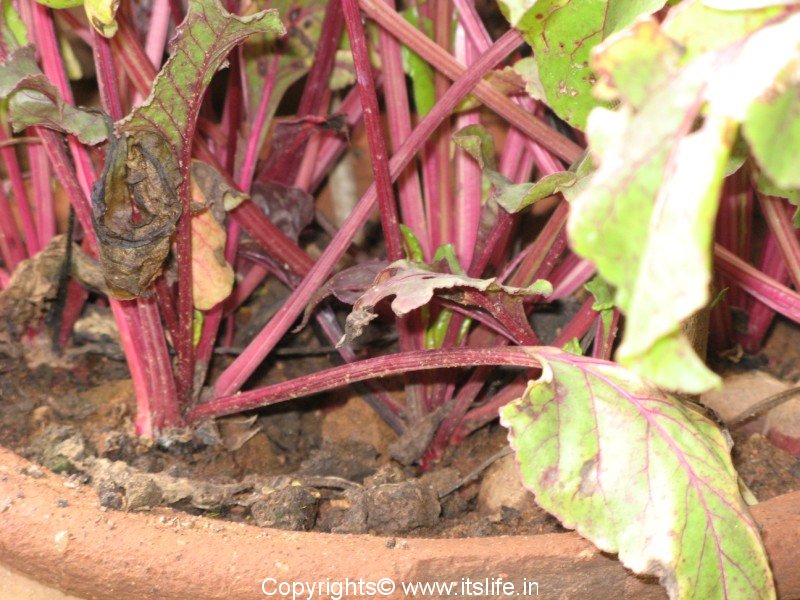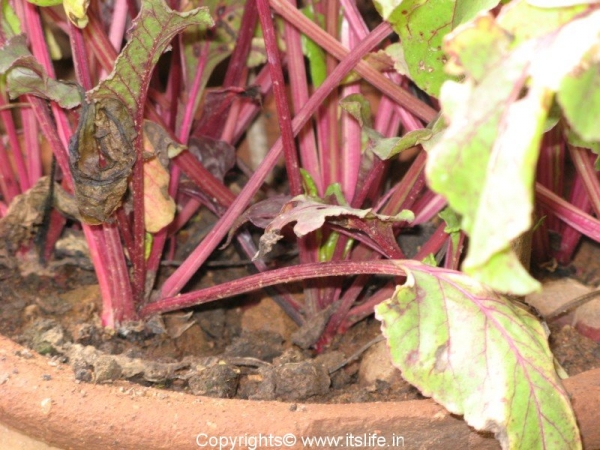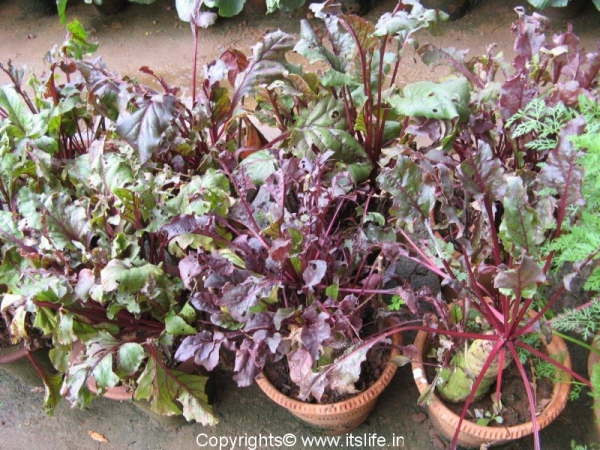Beetroot is cultivated widely across the world as it is one of the most popular vegetables used in a variety of dishes. The leaves are also edible when boiled or steamed.
Beetroot has been cultivated for the last 4000 years and is a native of the Mediterranean region.
Propagation:
Beetroot grows best in cool weather, but it can be planted throughout the year. The soil should be light and rich. Beetroot grows best under direct sun.
Beetroot is propagated by seeds. Soak the seeds in water for few hours before sowing. Sow the seeds in groups for easy handling. The seeds germinate within 12 to 24 days. Separate the saplings and plant them with 6 inches space between them. Water the plants once a week during cool weather. Water the plants two or three times a week during very hot weather. Do not flood the plants, as this encourages leaf growth and stall the root growth.
The plant grows to a height of 1 to 2 meters tall. The heart shaped leaves are 5 to 20 cm long. Flowers of beetroot are green with red shades and bloom on spikes and each bloom has 5 petals and are 3 to 5 mm in diameter.
Harvest when they attain a width of 7.5 Cm.
Medicinal uses:
Per research, daily intake of beetroot juice reduces blood pressure. Beetroot is also good for the immune system, liver, kidneys, and bladder function, cardiovascular health; Beetroot is rich in potassium, phosphorus, calcium, sulfur, iodine, iron and copper. It also contains vital vitamins like B1, B2, Niacin, B6, B12 and C.
Other uses:
Beetroot is used in many cuisines around the globe. It adds color and enhances the taste of the dish. It can be eaten raw, boiled, steamed, or roasted.
This vegetable is also used to formulate food coloring.
Recipes using Beetroot:
- Beetroot Saaru
- Beetroot Palya
- Beetroot Chutney
- Beetroot Salad
- Club Sandwich
- Beetroot Raitha
- Beetroot Poori




